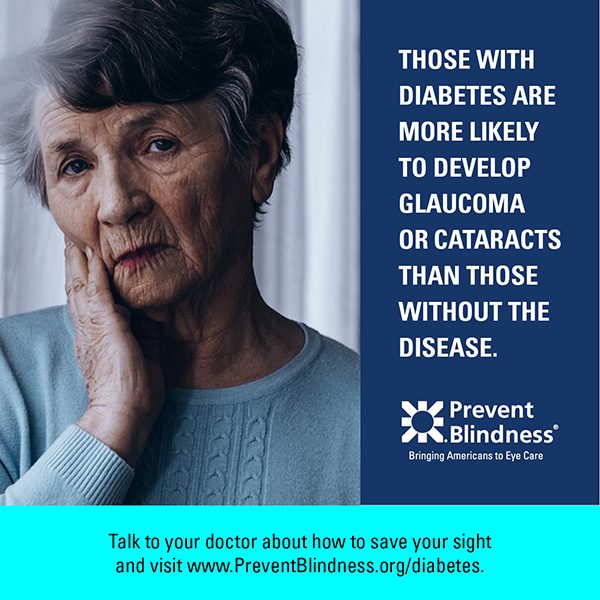Prevent Blindness Offers Free Informational Resources for Diabetic Eye Disease Awareness Month
Today, according to the Centers for Disease Control and Prevention (CDC), more than 100 million adults in the United States are now living with diabetes or prediabetes, a condition that if not treated, often leads to type 2 diabetes within five years. One of the many damaging effects that diabetes can have is on vision. Diabetes is the leading cause of new cases of blindness in adults.
November has been declared by Prevent Blindness as Diabetic Eye Disease Awareness Month to educate the public on the effects of diabetes on vision, risk factors and treatment options. Prevent Blindness offers a variety of free resources dedicated to the education of diabetic eye disease at preventblindness.org/diabetes.
Diabetes is a chronic condition that occurs when blood sugar levels are constantly high that can cause serious health complications, including heart disease, kidney failure, nerve damage, and blindness. The National Eye Institute states that people with diabetes are 25 times more likely to become blind than those without diabetes. Additionally, African Americans suffer a 40 percent higher frequency of severe visual impairment caused by diabetic retinopathy as compared with Whites, and twice the rate of blindness.
Diabetic eye disease refers to a group of eye problems that people with diabetes may face as a complication of this disease including:
-
- Diabetic retinopathy – A leading cause of blindness in American adults, it is caused by damage to the small blood vessels of the retina – the seeing layer of the eye.
-
- Diabetic macular edema (DME) – A complication of diabetes caused by leaking blood vessels, which leads to fluid accumulation in the macula, the center of the retina used for central vision. DME can cause central vision to become blurry.
-
- Glaucoma – Optic nerve damage and possible loss of side vision, usually caused by increase in fluid pressure inside the eye.
“The number of diabetes cases continues to increase, and the condition is hitting people at a much younger age than ever before, which means more cases of permanent vision loss to millions across the country,” said Jeff Todd, president and CEO of Prevent Blindness. “We encourage everyone to get routine dilated eye exam, and those with diabetes to do so annually, so that eye doctors are given a chance to detect, treat and limit the damaging effects to vision.”
Visit Our Infographics Archive for More Diabetes Infographics to Download and Share
For more information on diabetic eye disease, please call Prevent Blindness at (800) 331-2020 or visit preventblindness.org/diabetes. For a free listing of organizations and services that provide financial assistance for vision care in English or Spanish, please visit https://www.preventblindness.org/vision-care-financial-assistance-information.
Download a copy of the Diabetic Eye Disease Awareness Month press release.

